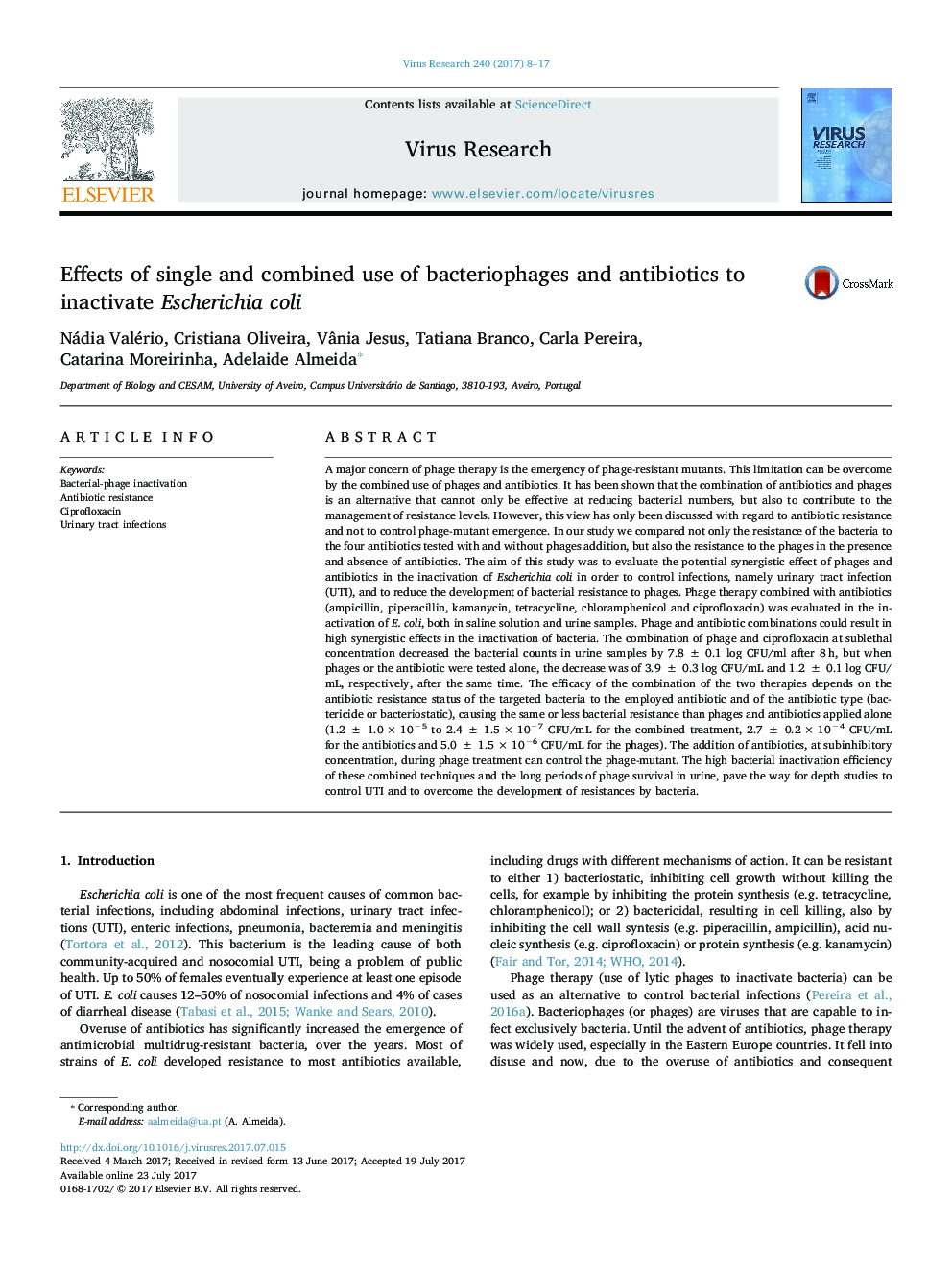| کد مقاله | کد نشریه | سال انتشار | مقاله انگلیسی | نسخه تمام متن |
|---|---|---|---|---|
| 5675285 | 1594317 | 2017 | 10 صفحه PDF | دانلود رایگان |
- Phage and antibiotic combinations could result in high synergistic effects in the inactivation of bacteria.
- The efficacy of the combination depends on the antibiotic resistance status of the targeted bacteria.
- The efficacy of the combination depends on the antibiotic type (bactericide or bacteriostatic).
- Phage and antibiotic combinations cause the same or less resistance than phages and antibiotics applied alone.
A major concern of phage therapy is the emergency of phage-resistant mutants. This limitation can be overcome by the combined use of phages and antibiotics. It has been shown that the combination of antibiotics and phages is an alternative that cannot only be effective at reducing bacterial numbers, but also to contribute to the management of resistance levels. However, this view has only been discussed with regard to antibiotic resistance and not to control phage-mutant emergence. In our study we compared not only the resistance of the bacteria to the four antibiotics tested with and without phages addition, but also the resistance to the phages in the presence and absence of antibiotics. The aim of this study was to evaluate the potential synergistic effect of phages and antibiotics in the inactivation of Escherichia coli in order to control infections, namely urinary tract infection (UTI), and to reduce the development of bacterial resistance to phages. Phage therapy combined with antibiotics (ampicillin, piperacillin, kamanycin, tetracycline, chloramphenicol and ciprofloxacin) was evaluated in the inactivation of E. coli, both in saline solution and urine samples. Phage and antibiotic combinations could result in high synergistic effects in the inactivation of bacteria. The combination of phage and ciprofloxacin at sublethal concentration decreased the bacterial counts in urine samples by 7.8 ± 0.1 log CFU/ml after 8 h, but when phages or the antibiotic were tested alone, the decrease was of 3.9 ± 0.3 log CFU/mL and 1.2 ± 0.1 log CFU/mL, respectively, after the same time. The efficacy of the combination of the two therapies depends on the antibiotic resistance status of the targeted bacteria to the employed antibiotic and of the antibiotic type (bactericide or bacteriostatic), causing the same or less bacterial resistance than phages and antibiotics applied alone (1.2 ± 1.0 Ã 10â5 to 2.4 ± 1.5 Ã 10â7 CFU/mL for the combined treatment, 2.7 ± 0.2 Ã 10â4 CFU/mL for the antibiotics and 5.0 ± 1.5 Ã 10â6 CFU/mL for the phages). The addition of antibiotics, at subinhibitory concentration, during phage treatment can control the phage-mutant. The high bacterial inactivation efficiency of these combined techniques and the long periods of phage survival in urine, pave the way for depth studies to control UTI and to overcome the development of resistances by bacteria.
Journal: Virus Research - Volume 240, 15 August 2017, Pages 8-17
